Do not Trust Anyone if You Have Internet
Lijiangers
have the best taste where dogs are concerned. I have seen an unparalleled
wealth of giant fluffy dogs who warm my heart almost as much as their thick
coats must warm them. But today’s story is not about dogs; it is about taking
local wisdoms with a grain of salt.
In the
morning, the owner of the hotel where I was staying, and of three giant fluffy
dogs and one medium-sized fluffy dog, gave me a map of Lijiang’s old town. Very
kindly – and very slowly, taking note of my Chinese skills – she talked me
through the sights worth seeing in the old town. She followed with a couple of
suggestions about trips out of the city. Disparaging the famous Jade Dragon
Snow Mountain as overpriced, overcrowded, and not worth it on a cloudy day (my
experience has convinced me that practically all days in Yunnan are cloudy, if
not downright rainy), she showed me some pictures of the nearby villages of
Baisha and Shuhe, as well as a few natural wonders way too far away for me to
consider visiting in the space of two days.
Intrigued
by hearing about other villages with similarly preserved historical centres, I
inquired about how to get to them, which the lady assured me was not difficult.
While Shuhe was six kilometres away, I could get there by bus from the southern
end of the old city. Baisha was only a kilometre away from the first village.
Somehow that squared with what I remembered from the previous night of
anxiously tracking my bus, so I did not check further.
The morning
in Lijiang was beautiful. Even at nine, the streets were practically empty, and
the omnipresent stores which have sucked the soul out of the city were still
closed. I walked by one of the town’s shallow streams, criss-crossed by sturdy
stone bridges and planks of hardy wood. I visited the Mu Family Palace, the
biggest and by far fanciest compound in the old town, replete with beautiful
porcelain vases and many, many red pillars. Above the palace, I climbed a tower
with sweeping views of Lijiang and somewhat less sweeping views of the
surrounding mountains, which were all covered by clouds. Farther in the north
of the town, I saw Lijiang’s famous waterwheels, and proceeded to the Black
Dragon Pool, where I ate popcorn for lunch because there was too much to do and
too little time to do it (and also very few vegetarian fast food options).
Admittedly, the park is much more beautiful when the Jade Dragon Snow Mountain
is visible, but I still snagged some quite pretty pictures.
An old stone bridge across Lijiang's river
A quiet overcast morning in Lijiang
A stream in Lijiang
Another view of the streets along Lijiang's streams
A doorway above a stream in Lijiang
Deserted streets in the centre of Lijiang: It is not yet nine o'clock, which is when the shops start to open and the first tourists begin to arrive.
The outside of the Mu Palace
The first courtyard of the Mu Palace: It is still early in the morning and the tourist masses are getting ready to hit the streets.
A colonnade at the Mu Palace
A giant vase at the Mu Palace
The second courtyard of the Mu Palace
The view from the tower in the above picture
Another colonnade at the Mu Palace
A bird's-eye view of the Mu Palace
A Buddhist drum
Wangu Tower above the Mu Palace
Another view of the Wangu Tower
The writing above the entrance to the Wangu Tower
The courtyard below the Wangu Tower
Another bird's-eye view of the Mu Palace
A pavilion at the Mu Palace
Another view of the pavilion at the Mu Palace
Lijiang's Old Town Gate
Umbrellas above a street in Lijiang
A miraculously empty street in Lijiang
A stele depicting a local legend
A little pillar at Black Dragon Pool
A little crocus-like flower at Black Dragon Pool
One view of Black Dragon Pool
Another view of Black Dragon Pool
The famous view of Black Dragon Pool (mountain covered by clouds, but I got ducks instead)
Hongtaiyang Square - one can catch a shuttle to Jade Dragon Snow Mountain from here.
Having
toured pretty much all there was to tour in the old city by midday, I weighed
my options. Despite the disparaging attitude of my host towards Jade Dragon
Snow Mountain, I was still eager to visit what is said to be the Northern
Hemisphere’s southernmost glacier. Yet the mountain is quite far away from the
city and I figured that if I wanted to go, the next day would be better for a
visit. I decided, therefore, to visit Baisha and Shuhe, which I saw were less
than half the distance between Lijiang and Jade Dragon Snow Mountain.
Since the Black
Dragon Pool is in the north of town, I was not particularly eager to go to the
south and try to find the bus station the hotel owner talked about. I located
the closest taxi station and told the driver to drive to Baisha for the sole
reason that it was easier to pronounce than Shuhe.
As we drove
farther and farther away from town, the six kilometres mentioned in the morning
began to feel less and less like six kilometres and more and more like – well,
a lot more than six kilometres. I had planned, in the worst-case scenario, to
return to Lijiang by foot, but seeing the vast stretches of flat grasslands
between the car and civilisation, I began to realise that the only feasible
option was to get back on wheels. No matter, I would find a bus station in the
nearby Shuhe.
In
comparison with the polished streets of Lijiang, Baisha was rather more dirty,
dusty, and a little more decrepit. While in Lijiang I was one of perhaps five
or six white people a local would spot per day, in Baisha, it seemed like I was
one of the very few tourists in general. What truly betokened the fact that I
was well outside Lijiang, though, was the number of people wearing traditional
Naxi people clothing. I remember reading that many of the old inhabitants of
Lijiang, many of whom are Naxi, were forced out of the city by soaring prices
not too long ago. And yet, even in this village where the streets were roamed
by dogs with cataracts, every single restaurant had a sign in Mandarin and
English – one, in truly ecumenical fashion, even displayed the pictures of
Barack Obama and Donald Trump munching on hotdogs and hamburgers.
The dustier streets of Baisha
Some washing to do above a Baisha stream
Another Baisha street
Smart advertising...
... for voters of all stripes!
An empty street in Baisha
Cruising the streets of Baisha
One of the nicer buildings in Baisha
There is
one main street in Baisha and I decided I would walk down that street from the
north end of the village to the south end. The largely sunny weather was
interspersed with occasional misty sprinklings of rain, making for a vaguely
surreal atmosphere. Nearing what seemed to be the edge of the most touristy
zone, I checked the map on my phone. I zoomed in and out a couple of times to
confirm my suspicions, but the verdict was clear: it was decidedly not a
kilometre from Baisha to Shuhe.
Again, I
weighed my options. I did want to go to Shuhe, and I was not confident that if
I boarded a Lijiang-headed bus in Baisha, I would get there. I had also not
noticed any bus stations, and hopeful thinking would not conjure an unoccupied
taxi in that village. Not very keen on trying to locate the bus station, and
quite intrigued by what seemed to be continuing settlements in the direction of
Shuhe, I set off on foot.
The sun
continued to mingle with clouds in what was really a very pretty day. As I went
farther and farther from the village, people grew scarcer and scarcer, and
increasingly surprised to see a single foreigner with nothing but a camera bag.
A few times, a car would slow down a little behind me and then speed up again
as I turned around. Eventually, the few
houses gave way to simple, vast open spaces silhouetted by sharply rising
mountain slopes. I saw a lone cow, a few horses, and some completely run-down
houses, including what seemed to be a rustic woodwork shop – I could not tell
whether its dilapidation was part of its aesthetic, or whether it was truly
abandoned.
A lady in Naxi garb walks down a street in Baisha.
I am slowly beginning to get lost, but that does not mean the Chinese government does not know where I am.
A roadside sunflower
On the outskirts of Baisha
By the looks of it, a seller of roof tiles
My presence surprised a local cow.
An abandoned building with a scenic backdrop
More scenic mountains
Scenic mountains and a pagoda
The almost
five kilometre walk finally ended at Shuhe, which turned out to be something
between the rustic Baisha and hackneyed Lijiang. There were many tourists, but
it also seemed much of the native populace had not yet been displaced by shops
and restaurants. I wandered off into a tiny Buddhist temple built into a rock,
and then strolled around the peaceful streams until I got tired and found a
taxi to drive me back (a trip that was perhaps thirty per cent cheaper than the
trip to Baisha because of how much I had walked).
Amulets at a temple in Shuhe
I think this is a dahlia.
A mushroom island in the middle of a stream
A Naxi woman tending to her garden
A street in Shuhe
A big fluffy samoyed
The trees and mountains of Shuhe
A temple cave in Shuhe
Youngsters carrying branches for reasons unknown to me
An empty street in Shuhe
Another fluffy dog
The bustle of daily life in Shuhe
Shuhe waterfront houses
Another view of waterfront houses in Shuhe
A tower on the main square of Shuhe
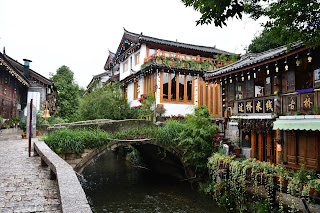









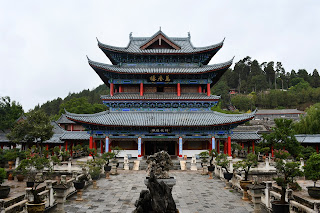








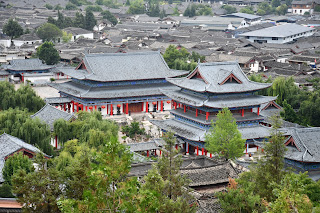










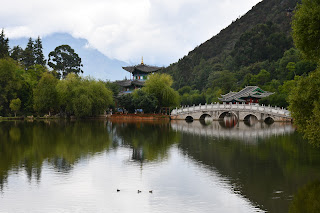









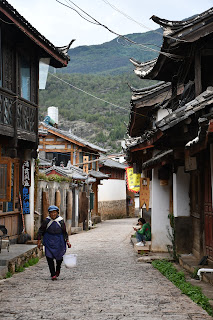


























Comments
Post a Comment